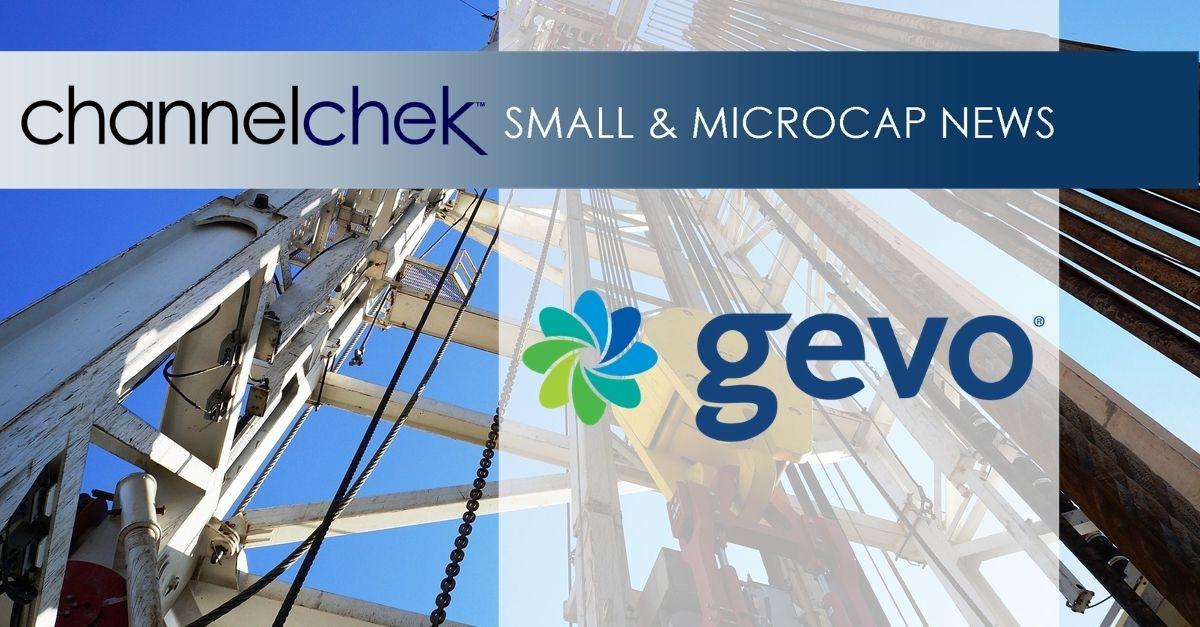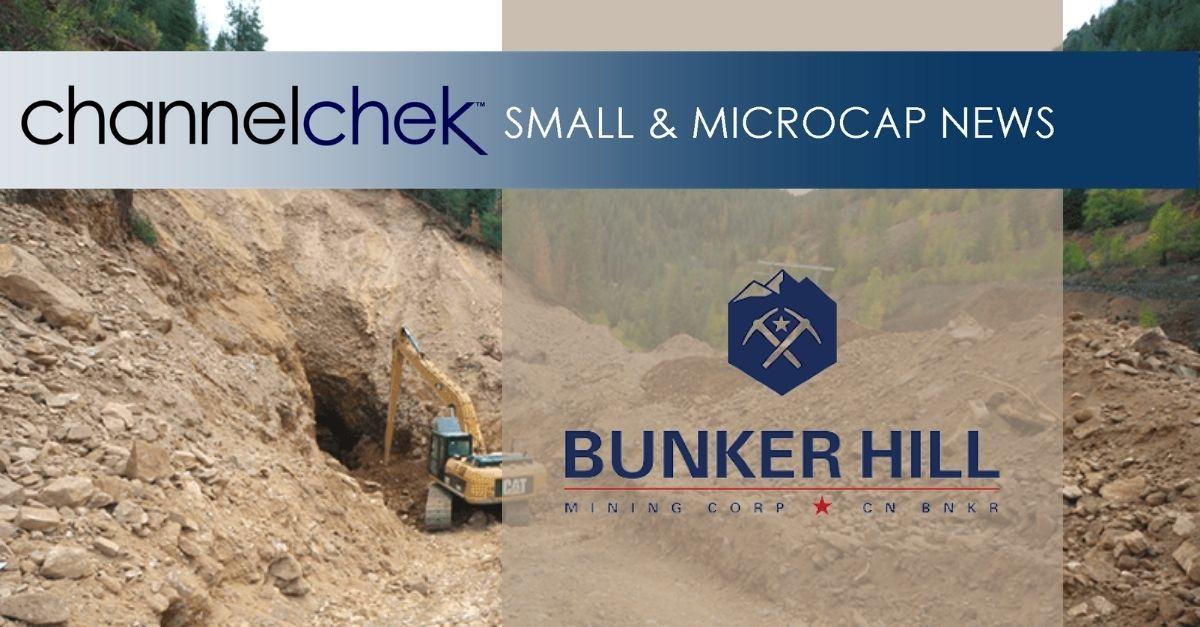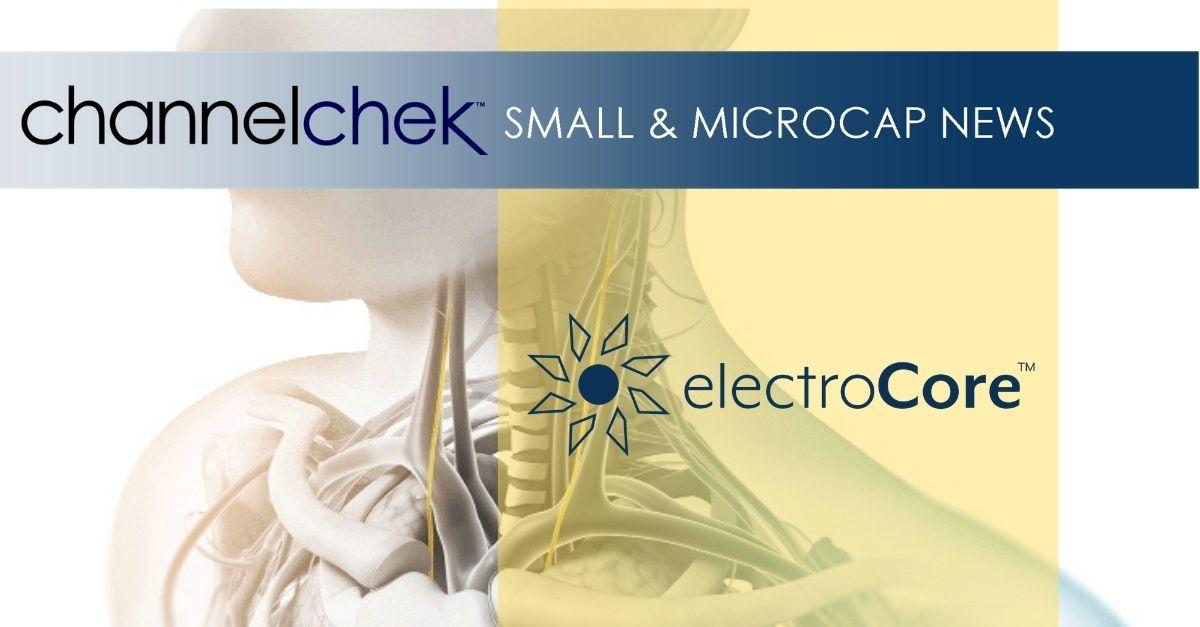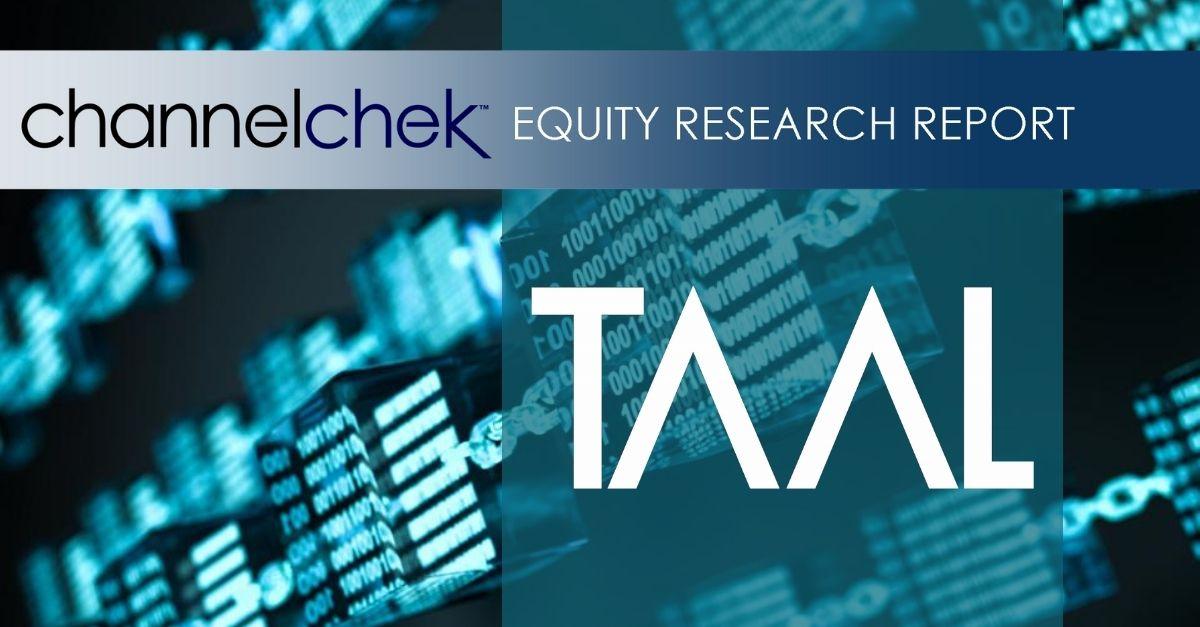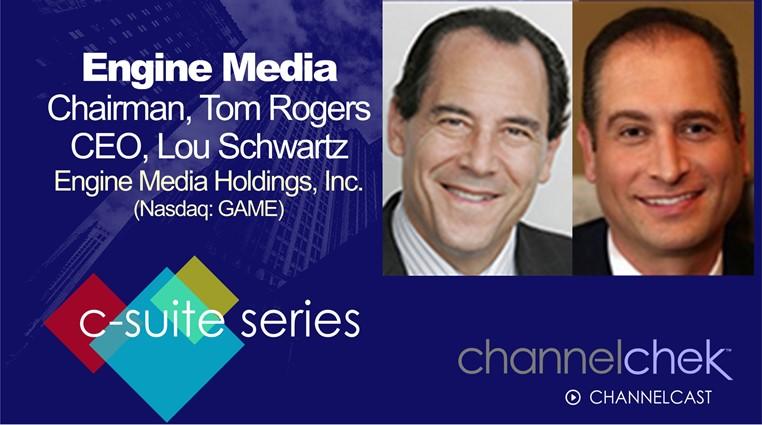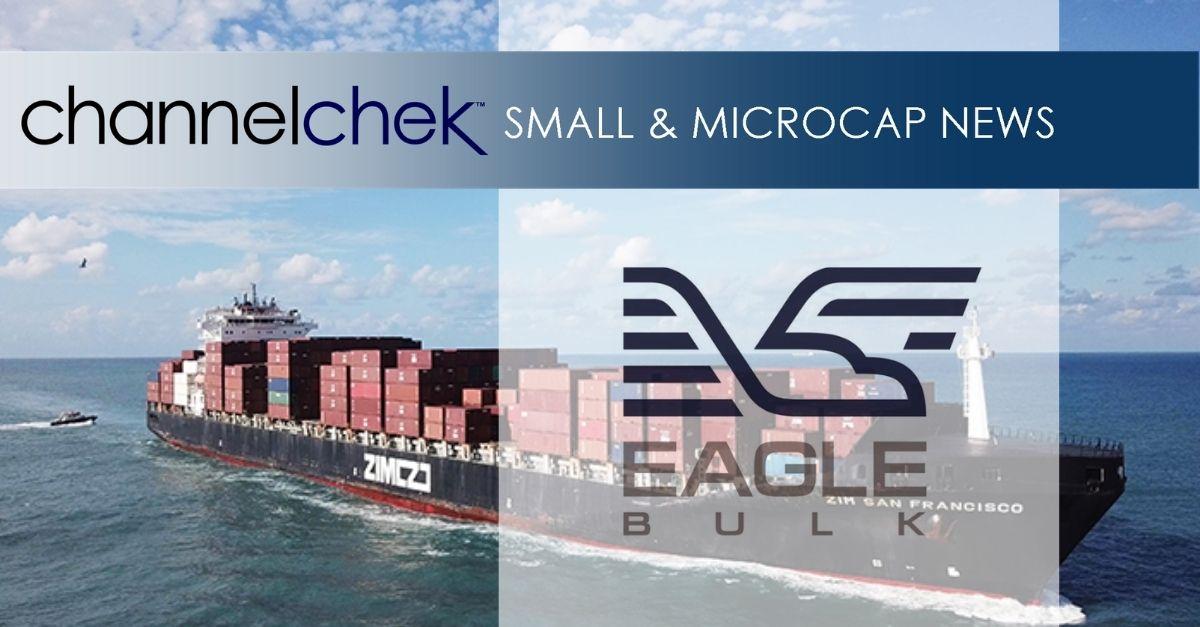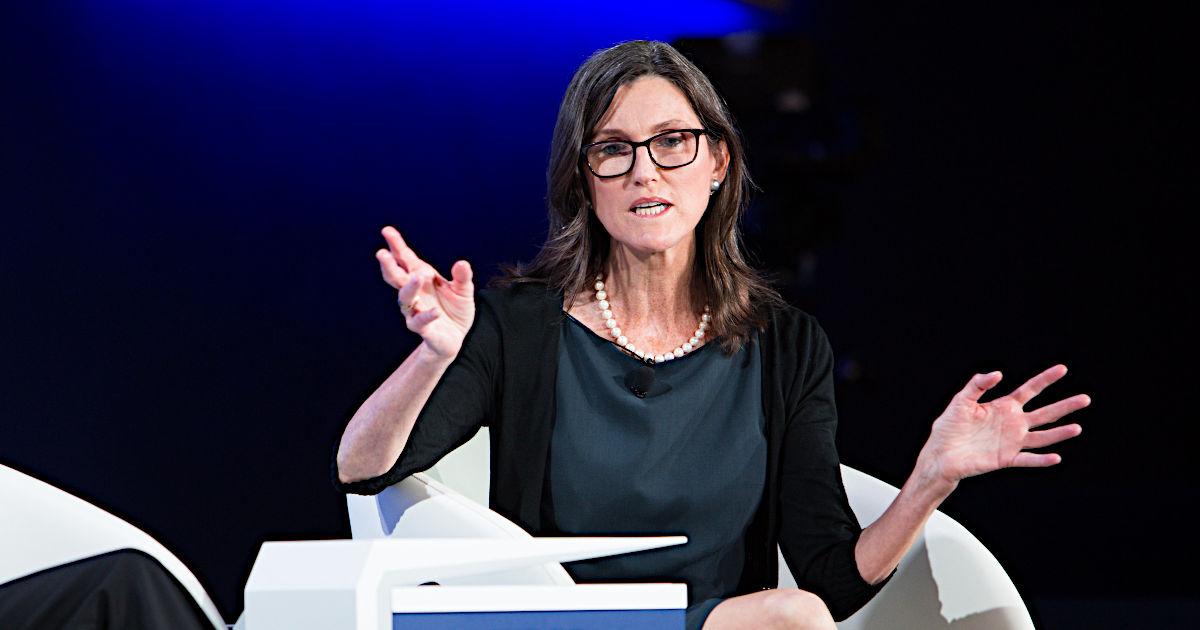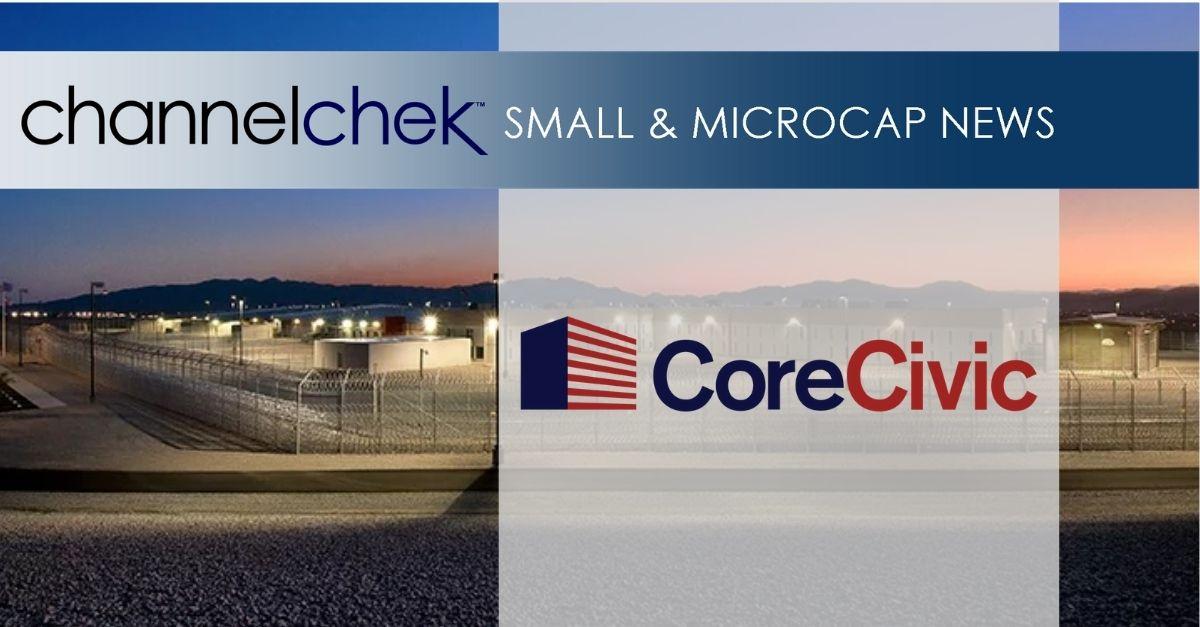
Bunker Hill Announces Updated PEA: 42% Increase in NPV to $143M, 29% Decrease in AISC, 41% Increase in FCF Over Extended 11 Year Mine Life
HIGHLIGHTS:
- Materially improved financial returns: 143M NPV (+42% increase), 35% IRR, 2.6 year payback, $25M annual average FCF (+28% increase) at $1.15/lb Zn, $0.90/lb Pb, $20/oz Ag (metal prices unchanged from April 2021 PEA )
- Increased use of Long-Hole Open Stoping mining drives a 29% reduction in AISC to $0.47 per pound of payable zinc
- Nearly 1 billion zinc equivalent pounds (including over 8 million ounces of silver) produced over an extended 11 year mine life. The mine’s significant high-grade silver potential outside the current resource is not included
- CEO Sam Ash and CFO David Wiens to host live interactive 6ix virtual investor event on Tuesday, September 21st at 11:00AM ET / 8:00AM PT. Investors are invited to register for this event at: [LINK]
TORONTO, Sept. 20, 2021 (GLOBE NEWSWIRE) — Bunker Hill Mining Corp. (the “Company”) (CSE: BNKR, OTCQB: BHLL) is pleased to announce an updated Preliminary Economic Assessment (the “PEA” or the “updated PEA”) for the Bunker Hill Mine, showing materially improved financial returns, free cash flow, and unit costs.
The updated PEA contemplates a $44 million initial capital cost (including 20% contingency) to rapidly restart the mine over an 18-month period, generating approximately $25 million of annual average free cash flow over an extended 11-year mine life while producing nearly 1 billion zinc equivalent pounds of metal, including over 8 million ounces of silver. Metal price assumptions in the updated PEA remain unchanged from the PEA announced in April 2021 and published in June 2021 (the “June PEA”), thereby not reflecting significant increases in zinc and lead prices since that time.
Sam Ash, CEO of Bunker Hill Mining, stated: “We are very pleased to report the results of this summer’s mine plan optimization work and its significant positive effect on estimated financial returns, free cash flow, and cost position relative to April’s PEA. This is an important development milestone and affirms further the significant value to be realized from the rapid restart of the Bunker Hill Mine for our shareholders as well as our local partners and stakeholders.”
Concurrent with engineering studies designed to further enhance the project’s economics, the Company and its advisors are actively engaged with capital providers that have expressed an interest in financing the rapid restart of the mine.
The PEA was prepared in accordance with National Instrument 43-101 – Standards of Disclosure for Mineral Projects (“NI 43-101”). MineTech USA, LLC (“MineTech”) developed the mine infrastructure, capital expenditures and operating expenditures related portions of the updated PEA as well as the mine plan and operating schedules. Certain assumptions developed in coordination with Resource Development Associates Inc. (“RDA”) and Pro Solv Consulting, LLC., including metallurgical assumptions, remain unchanged from the June PEA. The Company plans to file the completed updated PEA technical report on SEDAR within 45 days of this press release and make it available on the Company’s website. All “t” references in this press release are to short tons and “$” references are in U.S. dollars.
Table 1 summarizes the key findings of the updated PEA relative to those in the June PEA.
Table 1: Updated PEA vs. June PEA
| |
Updated
PEA |
|
June
PEA |
|
|
% increase/
(decrease) |
|
| |
|
|
|
|
| Metal Prices |
|
|
|
|
| Zinc ($/lb) |
1.15 |
|
1.15 |
|
|
– |
|
| Lead ($/lb) |
0.90 |
|
0.90 |
|
|
– |
|
| Silver ($/lb) |
20.00 |
|
20.00 |
|
|
– |
|
| |
|
|
|
|
| Financial returns |
|
|
|
|
| After-tax NPV (5%) ($000) |
143,471 |
|
100,737 |
|
|
42 |
% |
| After-tax NPV (8%) ($000) |
107,790 |
|
78,355 |
|
|
38 |
% |
| After-tax IRR (%) |
35.2 |
% |
46.2 |
% |
|
-24 |
% |
| Payback (years) |
2.6 |
|
2.5 |
|
|
4 |
% |
| |
|
|
|
|
| Total Cash Flow ($’000) |
|
|
|
|
| EBITDA (3) (4) |
383,378 |
|
298,018 |
|
|
29 |
% |
| Pre-tax free cash flow (3) |
284,999 |
|
190,944 |
|
|
49 |
% |
| Free cash flow (3) |
233,310 |
|
154,144 |
|
|
51 |
% |
| |
|
|
|
|
| Average Annual Cash Flow ($’000) |
|
|
|
|
| EBITDA (3) (4) |
34,853 |
|
29,802 |
|
|
17 |
% |
| Pre-tax free cash flow (3) (4) |
29,886
|
|
23,298 |
|
|
28 |
% |
| Free cash flow (3) (4) |
25,187
|
|
19,618 |
|
|
28 |
% |
| |
|
|
|
|
| Mine Plan |
|
|
|
|
| Mine life (years) |
11 |
|
10 |
|
|
10 |
% |
| |
|
|
|
|
| Total mineralized material mined (kt) |
6,377 |
|
5,460 |
|
|
17 |
% |
| Average zinc grade (%) |
5.0 |
% |
5.5 |
% |
|
-9 |
% |
| Average lead grade (%) |
2.8 |
% |
2.9 |
% |
|
-5 |
% |
| Average silver grade (oz/t) |
1.5 |
|
1.5 |
|
|
-3 |
% |
| Average zinc equivalent grade (%) (1) |
8.7 |
% |
9.3 |
% |
|
-7 |
% |
| |
|
|
|
|
| Total Production over LOM (2) |
|
|
|
|
| Zinc produced (klbs) |
591,140 |
|
555,977 |
|
|
6 |
% |
| Lead produced (klbs) |
323,116 |
|
290,157 |
|
|
11 |
% |
| Silver produced (koz) |
8,418 |
|
7,401 |
|
|
14 |
% |
| Zinc equivalent produced (klbs) (1) |
990,416 |
|
911,773 |
|
|
9 |
% |
| |
|
|
|
|
| Average Unit Costs over LOM |
|
|
|
|
| Opex – total ($/t) |
62 |
|
78 |
|
|
-21 |
% |
| Sustaining capex ($/t) |
10 |
|
14 |
|
|
-26 |
% |
| Cash costs ($/lb Zn payable) (3) |
0.33 |
|
0.49 |
|
|
-33 |
% |
| AISC ($/lb Zn payable) (3) |
0.47 |
|
0.65 |
|
|
-29 |
% |
(1) Zinc equivalency calculated using metal prices utilized in PEA: $1.15/lb Zn, $0.90/lb Pb, $20/oz Ag
(2) Includes zinc produced in zinc concentrate, lead produced in lead concentrate, silver produced in lead concentrate
(3) Cash costs and AISC per payable pound of zinc sold, earnings before interest, taxes, depreciation and amortization(“EBITDA”), pre-tax free cash flow and free cash flow are non-GAAP financial measures. Please see “Cautionary Note Regarding Non-GAAP Measures”
(4) Life of mine (“LOM”) data post initial capital expenditures
The PEA is preliminary in nature and includes Inferred mineral resources that are considered too speculative geologically to have the economic considerations applied to them that would enable them to be categorized as mineral reserves. There is no certainty that the project described in the PEA will be realized. Mineral resources that are not mineral reserves do not have demonstrated economic viability.
Mineral Resource Inventory
As with the June PEA, the updated PEA is based on the Bunker Hill Mineral Resource, which was published on March 22, 2021, following the drilling program conducted in 2020 and early 2021 to validate the historical reserves. The PEA includes a mining inventory of 6.4Mt, which represents a portion of the 4.4Mt Indicated mineral resource and 5.6Mt Inferred mineral resource. Given the 11-year mine life, the mine plan has been based on prioritizing higher grade material. The mine production schedule is based on an $80 per ton NSR cut-off value, representing a more refined optimization approach relative to the June PEA in which a 5.0% zinc operating cut-off grade was utilized.
Initial Capital Costs
The majority of initial capital costs, including the process plant, shaft and tunnel rehabilitation, remain unchanged from the June 2021 PEA. The marginal increase in total initial capital costs from $42 million (June PEA) to $44 million (updated PEA) primarily reflects higher required up-front investment for waste development to enable the use of long-hole open stoping (“LHOS”) as the predominant mining method in the mine plan, as opposed to the cut and fill method in the June PEA. All initial capital expenditures continue to include a 20% contingency.
Further capital cost optimization initiatives are ongoing, including the potential purchase of used process plant equipment. If successful, these have the potential to accelerate ramp up and reduce initial capital costs.
Mine Plan
For the updated PEA, the Newgard/Quill resource was optimized and scheduled utilizing the long-hole open stoping mining method, whereby stopes are accessed via lateral drifts driven off of a decline ramp connecting the levels vertically. The ramp provides ventilation, utilities, and secondary escapeway, as well as connecting the entire mine with rubber tire access. The LHOS areas are accessed through a combination of existing excavations rehabilitated to modern mining standards, and new excavation. Backfill requirements are provided via an underground paste plant and distribution system. The LHOS mining results in a step change downwards in mine operating costs from $58 to $41 per ton.
Production commences approximately six months following the start of construction, targeting 200 tons/day (“tpd”) ramping up to 1,000 tpd over the following six months. This ramp up allows for infrastructure components to be completed and commissioned to ensure the mine is adequately developed to maintain consistent production while taking advantage of toll milling for pre-production revenue generation. Initially, production will be targeted above the 9-level as the hoists and first 200-foot section of shaft rehabilitation are completed. The mine plan is developed to allow sequential water draw down and shaft rehabilitation between levels as new production horizons are required. This sequencing is continued to the 26-level.
Table 2: Mine Schedule
| Year (1) |
Pre-prod |
Year 1 |
Year 2 |
Year 3 |
Year 4 |
Year 5 |
Year 6 |
Year 7 |
Year 8 |
Year 9 |
Year 10 |
Year 11 |
Year 12 |
LOM
Total |
June
PEA |
| |
|
|
|
|
|
|
|
|
|
|
|
|
|
|
|
| Mineralized material mined (kt) |
135 |
|
396 |
|
548 |
|
548 |
|
548 |
|
548 |
|
548 |
|
548 |
|
548 |
|
548 |
|
548 |
|
548 |
|
372 |
|
6,377 |
|
5,460 |
|
| |
|
|
|
|
|
|
|
|
|
|
|
|
|
|
|
| Zinc grade (%) |
6.9 |
% |
6.6 |
% |
5.2 |
% |
6.3 |
% |
5.8 |
% |
5.1 |
% |
4.7 |
% |
5.7 |
% |
4.7 |
% |
5.2 |
% |
3.4 |
% |
2.1 |
% |
5.7 |
% |
5.0 |
% |
5.5 |
% |
| Lead grade (%) |
2.3 |
% |
2.3 |
% |
2.8 |
% |
2.1 |
% |
1.8 |
% |
2.2 |
% |
1.3 |
% |
2.2 |
% |
2.3 |
% |
1.8 |
% |
4.3 |
% |
6.5 |
% |
4.3 |
% |
2.8 |
% |
2.9 |
% |
| Silver grade (oz/t) |
0.3 |
|
0.7 |
|
1.2 |
|
1.1 |
|
0.5 |
|
1.2 |
|
1.0 |
|
1.4 |
|
1.4 |
|
1.2 |
|
2.7 |
|
3.7 |
|
2.0 |
|
1.5 |
|
1.5 |
|
| |
|
|
|
|
|
|
|
|
|
|
|
|
|
|
|
| Zinc eq grade (%) (2) |
9.0 |
% |
9.1 |
% |
8.6 |
% |
9.0 |
% |
7.7 |
% |
8.1 |
% |
6.8 |
% |
8.9 |
% |
7.8 |
% |
7.8 |
% |
9.5 |
% |
10.9 |
% |
11.0 |
% |
8.7 |
% |
9.3 |
% |
(1) Pre-production represents the first 12 months of the initial capex period; Years 1-11 represent 12-month periods, Year 12 represents 6-month period
(2) Zinc equivalency calculated using metal prices utilized in PEA: $1.15/lb Zn, $0.90/lb Pb, $20/oz Ag
Processing
The processing flowsheet and metallurgical assumptions as envisaged in the June PEA remain unchanged, with a crushing and milling plant to be centrally located on the 9-level, and milled material to be pumped in slurry to the flotation and paste plant on the 5-level. The flotation plant will generate concentrates which will be transported to surface for shipment. The paste plant will generate paste for geotechnical fill and tailings disposal in open drifts and stopes in the mine. This approach optimizes material transport costs while eliminating the need for surface tailings disposal.
Historical metallurgical results have been used for concentrate recoveries and grade. The results were averaged for the last five years of operation. The lead concentrate, assaying an average 67% Pb and 34 oz/t Ag, is estimated to recover 91% Pb and 89% Ag. The zinc concentrate, assaying 58% Zn, is estimated to recover 92% Zn. Metallurgical test work remains ongoing at RDI, with preliminary results received supporting assumptions used in the PEA.
The production schedule is presented in the Table below.
Table 3: Production Schedule
| Year (1) |
Pre-prod |
Year 1 |
Year 2 |
Year 3 |
Year 4 |
Year 5 |
Year 6 |
Year 7 |
Year 8 |
Year 9 |
Year 10 |
Year 11 |
Year 12 |
LOM
Total |
June
PEA |
| |
|
|
|
|
|
|
|
|
|
|
|
|
|
|
|
| Zn conc. (t) |
14,674 |
41,556 |
45,549 |
54,838 |
50,395 |
44,634 |
41,221 |
49,781 |
40,461 |
44,755 |
29,735 |
18,366 |
33,638 |
509,603 |
479,290 |
| Pb conc. (t) |
4,159 |
12,314 |
20,953 |
15,440 |
13,052 |
16,000 |
9,842 |
16,183 |
17,228 |
13,493 |
32,319 |
48,674 |
21,474 |
241,131 |
216,535 |
| |
|
|
|
|
|
|
|
|
|
|
|
|
|
|
|
| Zn prod. (klbs) |
17,022 |
48,204 |
52,837 |
63,613 |
58,459 |
51,776 |
47,816 |
57,745 |
46,935 |
51,916 |
34,492 |
21,304 |
39,020 |
591,140 |
555,977 |
| Pb prod. (klbs) |
5,573 |
16,500 |
28,077 |
20,690 |
17,489 |
21,441 |
13,188 |
21,686 |
23,086 |
18,080 |
43,308 |
65,223 |
28,776 |
323,116 |
290,157 |
| Ag prod. (koz) |
38 |
238 |
575 |
515 |
249 |
603 |
479 |
700 |
668 |
576 |
1,320 |
1,792 |
663 |
8,418 |
7,401 |
| |
|
|
|
|
|
|
|
|
|
|
|
|
|
|
|
| Zn eq. prod. (klbs) ( 2) |
22,052 |
65,261 |
84,803 |
88,755 |
76,484 |
79,049 |
66,470 |
86,886 |
76,621 |
76,089 |
91,347 |
103,520 |
73,079 |
990,416 |
911,773 |
(1) Pre-production represents the first 12 months of the initial capex period; Years 1-11 represent 12-month periods, Year 12 represents 6-month period
(2) Zinc equivalency calculated using metal prices utilized in PEA: $1.15/lb Zn, $0.90/lb Pb, $20/oz Ag
Operating and Sustaining Capital Costs
Cash costs and AISC per payable pound of zinc sold are non-GAAP financial measures. Please see “Cautionary Note Regarding Non-GAAP Measures”.
Mine operating costs are based on experienced local contract labor and equipment for mining operations. A zero-based efficiency and cost estimate was completed based on current underground contractors’ rates and guidance benchmarked against other like operations. Electrical power costs are based on scheduled projected loads applying an estimated power factor correction and applicable Avista Utilities rates for all projected mine, milling and site operations.
Mill operating costs are within guidance resulting from bench marking similar mill operations in north Idaho. Mine site general and administrative (G&A) costs are determined based on anticipated staffing levels and similar compensation compatible with area salaries.
All sustaining capital costs include a 20% contingency.
Annual and LOM cost metrics are presented in the Table below.
Table 4: Operating and Sustaining Capital Costs
| Year (1) |
Year 1 |
Year 2 |
Year 3 |
Year 4 |
Year 5 |
Year 6 |
Year 7 |
Year 8 |
Year 9 |
Year 10 |
Year 11 |
Year 12 |
LOM
Total |
June
PEA |
| |
|
|
|
|
|
|
|
|
|
|
|
|
|
|
| Mining ($/t) |
65 |
54 |
47 |
40 |
39 |
40 |
39 |
39 |
38 |
38 |
|
35 |
|
41 |
41 |
58 |
| Processing ($/t) |
15 |
15 |
15 |
15 |
15 |
15 |
15 |
15 |
15 |
15 |
|
15 |
|
15 |
15 |
15 |
| G&A ($/t) |
11 |
6 |
6 |
6 |
6 |
6 |
6 |
6 |
6 |
6 |
|
5 |
|
4 |
6 |
6 |
| Opex – total ($/t) |
90
|
74 |
68 |
61 |
60 |
60 |
60 |
60 |
59 |
59 |
|
54 |
|
59 |
62 |
78 |
| |
|
|
|
|
|
|
|
|
|
|
|
|
|
|
| Sustain capex ($/t) |
29 |
12 |
13 |
12 |
12 |
9 |
20 |
9 |
8 |
7 |
|
1 |
|
0 |
10 |
14 |
| |
|
|
|
|
|
|
|
|
|
|
|
|
|
|
| Cash costs ($/lb Zn) |
0.76 |
0.54 |
0.54 |
0.62 |
0.45 |
0.66 |
0.40 |
0.42 |
0.50 |
(0.40 |
) |
(2.18 |
) |
0.02 |
0.33 |
0.49 |
| AISC ($/lb Zn) |
1.04 |
0.69 |
0.67 |
0.76 |
0.60 |
0.78 |
0.63 |
0.54 |
0.60 |
(0.27 |
) |
(2.14 |
) |
0.02 |
0.47 |
0.65 |
(1) “Year 1” and “Year 12” are expressed on a 6-month basis; all other years on a 12-month basis
Cash Flow & Valuation
EBITDA, pre-tax free cash flow and free cash flow are non-GAAP financial measures. Please see “Cautionary Note Regarding Non-GAAP Measures”.
Post initial capital expenditures, the project is expected to generate pre-tax free cash flow of $329 million (41% increase relative to the June PEA) over its 11-year mine life and after-tax free cash flow of $275 million (41% increase relative to the June PEA). The Company expects to reinvest a portion of its pre-tax cash flows on high-grade silver targets in the existing mine footprint and those delineated by its geophysics program, which may reduce the tax assumptions accounted for in the project economics. Annual free cash flow increases in later years of the mine plan due to higher silver grades at deeper elevations.
The financial summary is presented in the Table below.
Table 5: Cash Flow & Valuation
| Year in $’000 (1) |
Initial
Capex |
Year 1 |
Year 2 |
Year 3 |
Year 4 |
Year 5 |
Year 6 |
Year 7 |
Year 8 |
Year 9 |
Year 10 |
Year 11 |
Year 12 |
LOM
Total |
June
PEA |
| |
|
|
|
|
|
|
|
|
|
|
|
|
|
|
|
| Zinc revenue |
|
24,664 |
|
51,649 |
|
62,181 |
|
57,143 |
|
50,611 |
|
46,740 |
|
56,446 |
|
45,878 |
|
50,748 |
|
33,716 |
|
20,825 |
|
38,143 |
|
538,744 |
|
521,583 |
|
| Lead revenue |
|
7,870 |
|
24,005 |
|
17,690 |
|
14,953 |
|
18,332 |
|
11,276 |
|
18,541 |
|
19,738 |
|
15,459 |
|
37,028 |
|
55,766 |
|
24,603 |
|
265,262 |
|
241,311 |
|
| Silver revenue |
|
3,110 |
|
10,917 |
|
9,778 |
|
4,740 |
|
11,464 |
|
9,103 |
|
13,295 |
|
12,694 |
|
10,950 |
|
25,085 |
|
34,055 |
|
12,605 |
|
157,797 |
|
137,286 |
|
| Gross revenue |
|
35,643 |
|
86,571 |
|
89,649 |
|
76,836 |
|
80,407 |
|
67,120 |
|
88,283 |
|
78,311 |
|
77,157 |
|
95,830 |
|
110,646 |
|
75,351 |
|
961,803 |
|
900,181 |
|
| TC/RC & freight |
|
(7,917 |
) |
(18,615 |
) |
(19,577 |
) |
(17,421 |
) |
(17,074 |
) |
(14,352 |
) |
(18,629 |
) |
(16,352 |
) |
(16,402 |
) |
(18,273 |
) |
(20,146 |
) |
(15,640 |
) |
(200,398 |
) |
(189,419 |
) |
| NSR |
|
27,727 |
|
67,955 |
|
70,072 |
|
59,416 |
|
63,333 |
|
52,767 |
|
69,654 |
|
61,960 |
|
60,754 |
|
77,557 |
|
90,500 |
|
59,711 |
|
761,405 |
|
710,762 |
|
| Mining |
|
(13,873 |
) |
(29,336 |
) |
(25,979 |
) |
(22,103 |
) |
(21,527 |
) |
(21,732 |
) |
(21,576 |
) |
(21,503 |
) |
(20,949 |
) |
(20,949 |
) |
(19,115 |
) |
(15,216 |
) |
(253,858 |
) |
(304,887 |
) |
| Processing |
|
(3,136 |
) |
(8,004 |
) |
(8,004 |
) |
(8,004 |
) |
(8,004 |
) |
(8,004 |
) |
(8,004 |
) |
(8,004 |
) |
(8,004 |
) |
(8,004 |
) |
(8,004 |
) |
(5,435 |
) |
(88,616 |
) |
(77,011 |
) |
| G&A |
|
(2,255 |
) |
(3,167 |
) |
(3,167 |
) |
(3,167 |
) |
(3,167 |
) |
(3,167 |
) |
(3,167 |
) |
(3,167 |
) |
(3,167 |
) |
(3,167 |
) |
(3,167 |
) |
(1,630 |
) |
(35,553 |
) |
(30,845 |
) |
| EBITDA |
|
8,463 |
|
27,448 |
|
32,922 |
|
26,141 |
|
30,634 |
|
19,864 |
|
36,907 |
|
29,286 |
|
28,634 |
|
45,437 |
|
60,213 |
|
37,429 |
|
383,378 |
|
298,018 |
|
| Sustain capex |
|
(6,190 |
) |
(6,725 |
) |
(6,876 |
) |
(6,832 |
) |
(6,507 |
) |
(4,834 |
) |
(11,215 |
) |
(4,811 |
) |
(4,440 |
) |
(3,931 |
) |
(685 |
) |
(54 |
) |
(63,098 |
) |
(73,503 |
) |
| Initial capex |
(43,743 |
) |
|
|
|
|
|
|
|
|
|
|
|
|
(43,743 |
) |
(42,034 |
) |
| Salvage |
|
|
|
|
|
|
|
|
|
|
|
|
|
|
|
|
|
|
|
|
|
|
|
8,463 |
|
8,463 |
|
8,463 |
|
| Pre-tax FCF |
(43,743 |
) |
2,273 |
|
20,723 |
|
26,046 |
|
19,310 |
|
24,127 |
|
15,030 |
|
25,692 |
|
24,475 |
|
24,195 |
|
41,506 |
|
59,529 |
|
45,838 |
|
284,999 |
|
190,944 |
|
| Taxes |
(517 |
) |
(268 |
) |
(2,500 |
) |
(4,706 |
) |
(3,003 |
) |
(4,112 |
) |
(1,446 |
) |
(4,964 |
) |
(3,749 |
) |
(3,316 |
) |
(6,999 |
) |
(9,789 |
) |
(6,323 |
) |
(51,690 |
) |
(36,800 |
) |
| FCF |
(44,260 |
) |
2,006 |
|
18,223 |
|
21,340 |
|
16,307 |
|
20,016 |
|
13,584 |
|
20,728 |
|
20,726 |
|
20,879 |
|
34,507 |
|
49,740 |
|
39,515 |
|
233,310 |
|
154,144 |
|
| |
|
|
|
|
|
|
|
|
|
|
|
|
|
|
|
| Annual metrics – post initial capex (2) |
|
|
|
|
|
|
|
|
|
|
|
|
|
| Gross revenue |
|
79,402 |
|
88,793 |
|
82,917 |
|
77,791 |
|
73,763 |
|
77,701 |
|
83,297 |
|
77,734 |
|
86,493 |
|
103,238 |
|
130,674 |
|
|
961,803 |
|
900,181 |
|
| EBITDA |
|
22,252 |
|
30,837 |
|
29,515 |
|
27,687 |
|
25,249 |
|
28,385 |
|
33,096 |
|
28,960 |
|
37,035 |
|
52,825 |
|
67,535 |
|
|
383,378 |
|
298,018 |
|
| Pre-tax FCF |
|
12,882 |
|
24,088 |
|
21,897 |
|
21,548 |
|
19,578 |
|
20,361 |
|
25,083 |
|
24,335 |
|
32,850 |
|
50,517 |
|
75,602 |
|
|
328,742 |
|
232,978 |
|
| FCF |
|
11,365 |
|
20,485 |
|
18,042 |
|
17,991 |
|
16,800 |
|
17,156 |
|
20,727 |
|
20,803 |
|
27,693 |
|
42,124 |
|
64,385 |
|
|
277,570 |
|
196,498 |
|
| |
|
|
|
|
|
|
|
|
|
|
|
|
|
|
|
| NPV (5%) |
143,471 |
|
|
|
|
|
|
|
|
|
|
|
|
|
|
|
| NPV (8%) |
107,790 |
|
|
|
|
|
|
|
|
|
|
|
|
|
|
|
| |
|
|
|
|
|
|
|
|
|
|
|
|
|
|
|
| IRR (%) |
35.2 |
% |
|
|
|
|
|
|
|
|
|
|
|
|
|
|
| Payback (years) |
2.6 |
|
|
|
|
|
|
|
|
|
|
|
|
|
|
|
(1) Initial capex period is expressed on an 18-month basis; “Year 1” and “Year 12” are expressed on a 6-month basis; all other years on a 12-month basis
(2) All metrics expressed on a 12-month basis, beginning after the 18-month initial capex period
Sensitivities
The tables below summarize the after-tax sensitivities of NPV and IRR, with respect to metal prices and costs.
Table 6: Sensitivities
| |
|
Metal Prices |
|
Operating & Capital Costs |
| |
|
|
|
|
|
|
|
|
|
|
|
|
|
|
|
|
NPV (5%)
($M)
|
|
|
|
Zinc Price ($/lb) |
|
|
|
Operating Costs (+/- %) |
| |
|
|
0.85 |
|
1.00 |
|
1.15 |
|
1.30 |
|
1.45 |
|
|
|
|
|
-20 |
% |
-10 |
% |
0 |
% |
10 |
% |
20 |
% |
| |
Lead
Price
($/lb)
|
0.70 |
19 |
|
66 |
|
110 |
|
154 |
|
198 |
|
|
Total
Capital
Costs
(+/-
%)
|
-20 |
% |
210 |
|
185 |
|
159 |
|
133 |
|
107 |
|
| |
0.80 |
37 |
|
83 |
|
127 |
|
171 |
|
215 |
|
|
-10 |
% |
203 |
|
177 |
|
151 |
|
125 |
|
100 |
|
| |
0.90 |
55 |
|
99 |
|
143 |
|
187 |
|
232 |
|
|
0 |
% |
195 |
|
169 |
|
143 |
|
118 |
|
92 |
|
| |
1.00 |
72 |
|
116 |
|
160 |
|
204 |
|
249 |
|
|
10 |
% |
187 |
|
162 |
|
136 |
|
110 |
|
84 |
|
| |
1.10 |
89 |
|
133 |
|
177 |
|
221 |
|
266 |
|
|
20 |
% |
180 |
|
154 |
|
128 |
|
102 |
|
77 |
|
| |
|
|
|
|
|
|
|
|
|
|
|
|
|
|
|
|
IRR (%)
|
|
|
|
Zinc Price ($/lb) |
|
|
|
Operating Costs (+/- %) |
| |
|
|
0.85 |
|
1.00 |
|
1.15 |
|
1.30 |
|
1.45 |
|
|
|
|
|
-20 |
% |
-10 |
% |
0 |
% |
10 |
% |
20 |
% |
| |
Lead
Price
($/lb)
|
0.70 |
8 |
% |
18 |
% |
28 |
% |
40 |
% |
53 |
% |
|
Total
Capital
Costs
(+/-
%)
|
-20 |
% |
63 |
% |
53 |
% |
43 |
% |
35 |
% |
28 |
% |
| |
0.80 |
11 |
% |
21 |
% |
32 |
% |
44 |
% |
57 |
% |
|
-10 |
% |
56 |
% |
47 |
% |
39 |
% |
32 |
% |
25 |
% |
| |
0.90 |
14 |
% |
24 |
% |
35 |
% |
47 |
% |
61 |
% |
|
0 |
% |
51 |
% |
43 |
% |
35 |
% |
29 |
% |
23 |
% |
| |
1.00 |
18 |
% |
27 |
% |
39 |
% |
51 |
% |
65 |
% |
|
10 |
% |
46 |
% |
39 |
% |
32 |
% |
26 |
% |
20 |
% |
| |
1.10 |
21 |
% |
31 |
% |
42 |
% |
55 |
% |
70 |
% |
|
20 |
% |
42 |
% |
35 |
% |
29 |
% |
23 |
% |
18 |
% |
QUALIFIED PERSON
Mr. Scott E. Wilson, CPG, President of Resource Development Associates Inc. and a consultant to the Company, is an Independent “Qualified Person” as defined by NI 43-101 and is acting at the Qualified Person for the Company. He has reviewed and approved the technical information summarized in this news release.
UPCOMING EVENTS
6ix Investor Event
September 21, 2021 @ 11:00am ET / 8:00am PT
Join Us: [LINK]
StockPulse Silver Symposium
September 27-28, 2021
Join Us: REGISTER NOW
ABOUT BUNKER HILL MINING CORP.
Under new Idaho-based leadership, Bunker Hill Mining Corp. intends to sustainably restart and develop the Bunker Hill Mine as the first step in consolidating a portfolio of North American precious-metal assets with a focus on silver. Information about the Company is available on its website, www.bunkerhillmining.com, or within the SEDAR and EDGAR databases.
For additional information contact: ir@bunkerhillmining.com
CAUTIONARY STATEMENTS
Certain statements in this news release are forward-looking and involve a number of risks and uncertainties. Such forward-looking statements are within the meaning of that term in Section 27A of the Securities Act of 1933, as amended, and Section 21E of the Securities Exchange Act of 1934, as amended, as well as within the meaning of the phrase ‘forward-looking information’ in the Canadian Securities Administrators’ National Instrument 51-102 – Continuous Disclosure Obligations. Forward-looking statements are not comprised of historical facts. Forward-looking statements include estimates and statements that describe the Company’s future plans, objectives or goals, including words to the effect that the Company or management expects a stated condition or result to occur. Forward-looking statements may be identified by terminology such as “may”, “will”, “could”, “should”, “expect”, “plan”, “anticipate”, “believe”, “intend”, “estimate”, “projects”, “predict”, “potential”, “continue” or other similar expressions concerning matters that are not historical facts. Since forward-looking statements are based on assumptions and address future events and conditions, by their very nature they involve inherent risks and uncertainties. Although these statements are based on information currently available to the Company, the Company provides no assurance that actual results will meet management’s expectations. Risks, uncertainties and other factors involved with forward-looking information could cause actual events, results, performance, prospects and opportunities to differ materially from those expressed or implied by such forward-looking information. The key risks and uncertainties include, but are not limited to: local and global political and economic conditions; governmental and regulatory requirements and actions by governmental authorities, including changes in government policy, government ownership requirements, changes in environmental, tax and other laws or regulations and the interpretation thereof; developments with respect to the coronavirus disease 2019 (“COVID-19”) pandemic, including the duration, severity and scope of the pandemic and potential impacts on mining operations; and other risk factors detailed from time to time in the Company’s reports filed on SEDAR and EDGAR. Forward-looking information and statements in this news release include statements concerning, among other things: the potential of the Bunker Hill Mine to be re-started rapidly as a low-cost, long life, sustainable operation based on the results of the PEA; the PEA representing robust financial returns; the potential of the restart plan to create jobs, ensure long-term environmental-management partnerships, and drive the long-term development of the Bunker Hill Mine’s resources; the timing for filing the PEA technical report; the timing, amount and duration of future production; future cash costs and AISC; commodity prices; the estimated capital and operating costs; the Company’s ability to discover new mineralization; the Company’s ability to self-fund high-grade silver exploration efforts to further increase cash flow margins; the timing for the Company’s progression of further technical studies and project finance discussions; potential sustainability impacts based on the results of the PEA, including the Bunker Hill Mine’s development and operations generating new jobs in Shoshone County, with such job creation having the potential to reduce unemployment in the county, procurement by the Bunker Hill Mine injecting additional funds into the local economy annually, and the Bunker Hill Mine achieving carbon neutrality in year one of operations and maintaining a minimal environmental footprint for the LOM; the potential for a reduction in the production of acid rock drainage; the potential for a reduction in the challenge and cost of water management; LOM capital improvements; metal recoveries; the Company’s plans to reinvest a portion of its pre-tax cash flows on its high-grade silver program; the Company’s goal to significantly increase free cash flow in the earlier years of the PEA based on its ongoing high-grade silver exploration program; the estimates of free cash flow, net present value and economic returns from the Bunker Hill Mine based on the results of the PEA; opportunities to increase the economics of the Bunker Hill Mine; our plans and expectations for the Bunker Hill Mine; and the Company’s intentions regarding its objectives, goals or future plans and statements. Factors that could cause actual results to differ materially from such forward-looking information include, but are not limited to: the ability to predict and counteract the effects of COVID-19 on the business of the Company, including but not limited to the effects of COVID19 on the price of commodities, capital market conditions, restriction on labor and international travel and supply chains; failure to identify mineral resources; failure to convert estimated mineral resources to reserves; the inability to complete a feasibility study which recommends a production decision; the preliminary nature of metallurgical test results; delays in obtaining or failures to obtain required governmental, environmental or other project approvals; political risks; changes in equity markets; uncertainties relating to the availability and costs of financing needed in the future; the inability of the Company to budget and manage its liquidity in light of the failure to obtain additional financing, including the ability of the Company to complete the payments pursuant to the terms of the agreement to acquire the Bunker Hill Mine Complex; inflation; changes in exchange rates; fluctuations in commodity prices; delays in the development of projects; capital, operating and reclamation costs varying significantly from estimates and the other risks involved in the mineral exploration and development industry; and those risks set out in the Company’s public documents filed on SEDAR and EDGAR. Although the Company believes that the assumptions and factors used in preparing the forward-looking information in this news release are reasonable, undue reliance should not be placed on such information, which only applies as of the date of this news release, and no assurance can be given that such events will occur in the disclosed time frames or at all. The Company disclaims any intention or obligation to update or revise any forward-looking information, whether as a result of new information, future events or otherwise, other than as required by law. No stock exchange, securities commission or other regulatory authority has approved or disapproved the information contained herein.
Cautionary Note to United States Investors
This press release has been prepared in accordance with the requirements of the securities laws in effect in Canada, which differ from the requirements of U.S. securities laws. Unless otherwise indicated, all resource and reserve estimates included in this press release have been disclosed in accordance with NI 43-101 and the Canadian Institute of Mining, Metallurgy, and Petroleum Definition Standards on Mineral Resources and Mineral Reserves. NI 43-101 is a rule developed by the Canadian Securities Administrators which establishes standards for all public disclosure an issuer makes of scientific and technical information concerning mineral projects. Canadian disclosure standards, including NI 43-101, differ significantly from the requirements of the United States Securities and Exchange Commission (“SEC”), and resource and reserve information contained in this press release may not be comparable to similar information disclosed by U.S. companies. In particular, and without limiting the generality of the foregoing, the term “resource” does not equate to the term “reserves”. Under U.S. standards, mineralization may not be classified as a “reserve” unless the determination has been made that the mineralization could be economically and legally produced or extracted at the time the reserve determination is made. The SEC’s disclosure standards normally do not permit the inclusion of information concerning “measured mineral resources”, “indicated mineral resources” or “inferred mineral resources” or other descriptions of the amount of mineralization in mineral deposits that do not constitute “reserves” by U.S. standards in documents filed with the SEC. Investors are cautioned not to assume that any part or all of mineral deposits in these categories will ever be converted into reserves. U.S. investors should also understand that “inferred mineral resources” have a great amount of uncertainty as to their existence and great uncertainty as to their economic and legal feasibility. It cannot be assumed that all or any part of an “inferred mineral resource” will ever be upgraded to a higher category. Investors are cautioned not to assume that all or any part of an “inferred mineral resource” exists or is economically or legally mineable. Disclosure of “contained ounces” in a resource is permitted disclosure under Canadian regulations; however, the SEC normally only permits issuers to report mineralization that does not constitute “reserves” by SEC standards as in-place tonnage and grade without reference to unit measures. The requirements of NI 43-101 for disclosure of “reserves” are also not the same as those of the SEC, and reserves disclosed by the Company in accordance with NI 43-101 may not qualify as “reserves” under SEC standards. Accordingly, information concerning mineral deposits may not be comparable with information made public by companies that report in accordance with U.S. standards.
Cautionary Note Regarding Non-GAAP Measures
This news release includes certain terms or performance measures commonly used in the mining industry that are not defined under International Financial Reporting Standards (“IFRS”) or U.S. GAAP, including cash costs and AISC per payable pound of zinc sold, EBITDA, pre-tax cash flow and free cash flow. Non-GAAP measures do not have any standardized meaning prescribed under IFRS or U.S. GAAP and, therefore, they may not be comparable to similar measures employed by other companies. The Company believes that, in addition to conventional measures prepared in accordance with IFRS and U.S. GAAP, certain investors use this information to evaluate its performance. The data presented is intended to provide additional information and should not be considered in isolation or as a substitute for measures of performance prepared in accordance with IFRS or U.S. GAAP.

